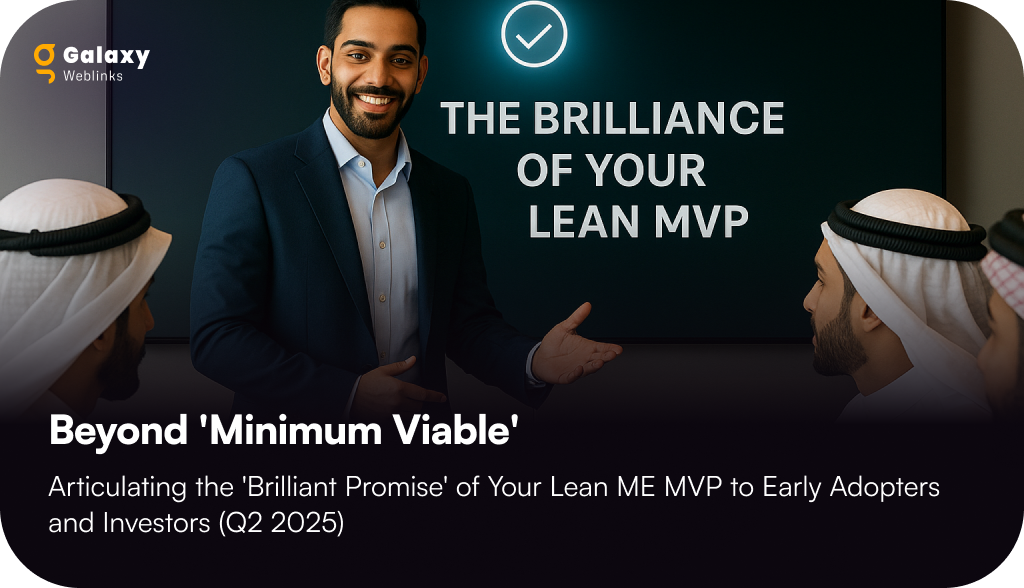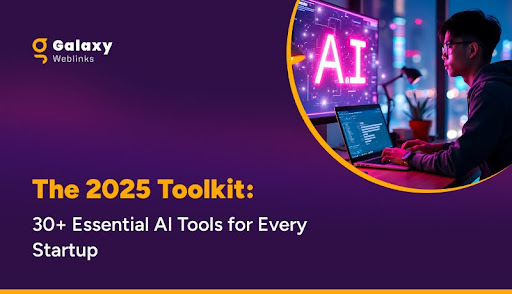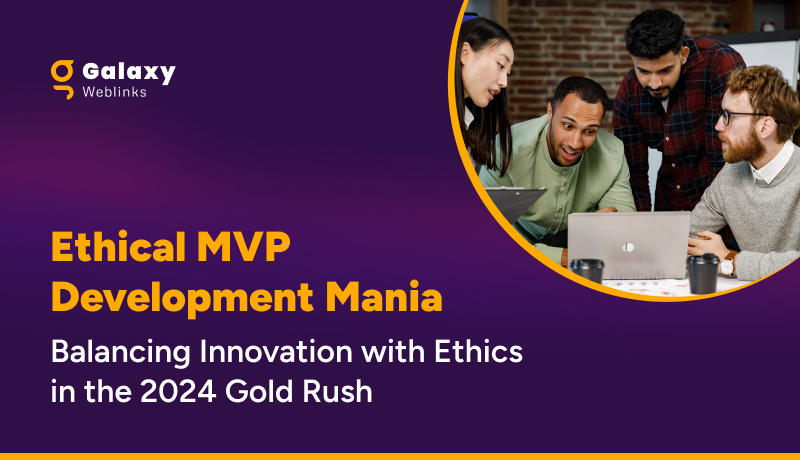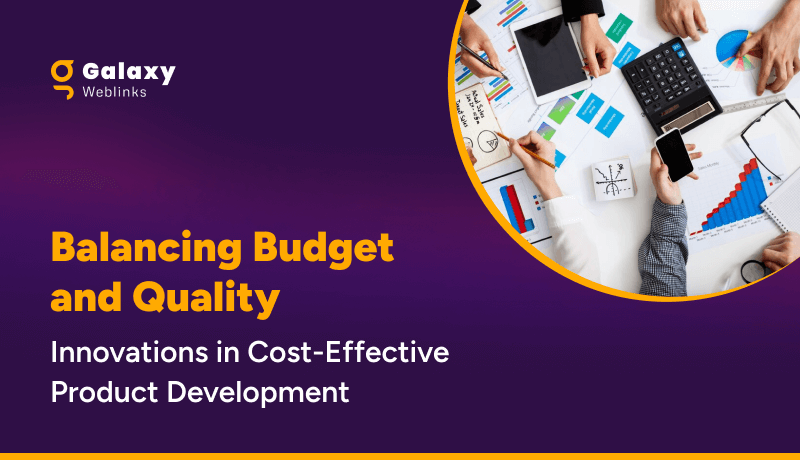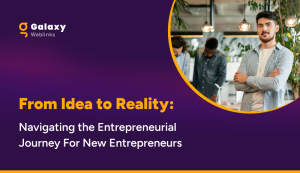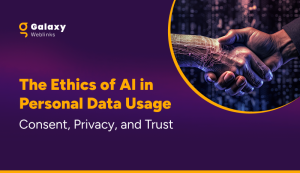A recent Q1 2025 report from ‘Gulf Digital Insights’ revealed a brutal truth for new apps in the region: for every $1,000 spent acquiring new users in major hubs like Dubai and Riyadh, an estimated $650 is incinerated within the first minute of use. Users are not just abandoning apps; they are rejecting them with ruthless efficiency. This isn’t a marketing problem; it’s a product philosophy problem.
The cause is a plague infecting the startup world: the “Minimum Disappointing Product” (MDP). An MDP is an MVP that technically works but feels cheap, uninspired, and disrespectful of the user’s time. It’s the tragic result of founders misinterpreting the lean startup MVP philosophy as a license to deliver a frustrating first experience. In a market where users are accustomed to the world-class polish of super-apps, this is a fatal error.
The only rational response is to stop building MDPs and instead deliver a “Brilliant Promise.”
A “Brilliant Promise” is not about adding more features. It is the disciplined art of using strategic UI/UX design for startups to make your lean product feel like a small, focused piece of a much bigger, high-quality vision. It is the tangible difference between a product that feels “unfinished” and one that feels “purposefully minimalist,” communicating deep respect for the user and unshakeable confidence in your future.
To survive now, your MVP development process must be redefined. You must learn to articulate a “Brilliant Promise” that wins the immediate trust of a skeptical audience and proves to investors you understand what quality truly means in 2025.
Why a ‘Viable’ MVP is No Longer Enough in the 2025 Gulf Market
In other markets, a clunky-but-functional MVP might get a pass. In the Middle East, it is a critical strategic failure. Three regional realities have created an environment where a superior user experience is no longer a “nice-to-have,” but a fundamental requirement for survival.
1. The World-Class User Expectation The average digital user in Dubai, Riyadh, or Doha has been trained by the best. They manage their lives through the seamless super-app experience of Careem, they shop with the sophisticated e-commerce power of Noon, and they handle their finances with the polished, secure banking apps from Al Rajhi Bank or FAB. This is their baseline. When they encounter your MVP, they are not comparing it to other startups; they are subconsciously comparing it to these world-class products. A clunky, confusing interface doesn’t just look bad—it positions your product as amateurish and unworthy of their time.
2. The Trust-Deficit Multiplier As we’ve discussed previously, every new startup in the region begins with a “Trust-Deficit.” A poor user experience acts as a powerful multiplier for this deficit. It provides tangible evidence that confirms a user’s worst fears. A slow-loading screen, a confusing layout, or a buggy button are not just technical flaws; they are red flags that signal a lack of professionalism and stability. This amplifies the “Insha’Allah Risk”—the user’s rational fear that your company is not a serious, long-term venture. A polished UI/UX is one of the fastest ways to start paying down that trust deficit.
3. The Investor Signal Discerning investors in 2025 look beyond the pitch deck; they look for proxies of founder quality. The importance of UI/UX for startups has grown because it is now seen as a direct signal of the founding team’s standards and capabilities. A thoughtfully designed MVP, even with just one feature, proves you are obsessed with the customer, detail-oriented, and capable of executing at a high level. Conversely, an MVP with a poor user experience signals to an investor that you are willing to cut the wrong corners, which is a major red flag for any business hoping to scale.
The ‘Brilliant Promise’ Playbook: Three Plays for a High-Impact MVP
Knowing you need a premium feel is not enough. The challenge is achieving it within the tight constraints of a lean startup MVP. This requires a ruthless focus on what truly matters. Instead of spreading your limited resources thin, you will execute three specific, high-impact plays designed to engineer a “Brilliant Promise” into your product from day one.
Play #1: The “First-Touch” Polish (Mastering the First 30 Seconds) The highest ROI in early user experience design for startups is found on the very first screen a user sees. This is where their trust is either won or lost.
- The Play: You will invest a disproportionate amount of design effort into the login/signup screen and the initial loading animation. This is not about adding features; it’s about signaling quality. Use a clean layout, a high-quality font, and a single, smooth micro-interaction—like a button that animates satisfyingly when tapped.
- The Use Case: Imagine a user downloads your health-tech MVP. Instead of a generic, default-font login form, they are greeted by a beautifully designed screen with a calming color palette, a clear and confident headline, and an elegant loading animation. This small, focused effort does not change the product’s function, but it instantly communicates professionalism, builds trust, and lowers their skepticism before they even use the core feature.
Play #2: The “Magic Moment” Engineering (Delivering One ‘Wow’ Interaction) A prototype demonstrates a function, but a “Brilliant Promise” MVP delivers an emotional payoff. This play involves identifying the single most valuable moment for your user and making it feel exceptional.
- The Play: Map out your user’s journey and pinpoint the one moment they feel the most relief, accomplishment, or value. This is your “magic moment.” You will invest your design and development resources in making this specific interaction feel seamless and delightful.
- The Use Case: Consider a fintech app for international remittances. The user’s moment of highest anxiety is right after they hit “send.” Your “magic moment” is the confirmation screen. Instead of a bland “Transaction Complete” message, the screen comes alive with a reassuring animation—perhaps a paper plane flying across the screen—and clear, comforting text: “Success! Your 5,000 AED has been securely sent to Priya.” This transforms an anxious moment into a delightful and memorable one.
Play #3: The “Vision-Casting” Copy (Articulating the Future, In-App) Your lean MVP will, by definition, be incomplete. The key is to frame this as a deliberate choice, not a lack of resources. This play uses the UI itself to tell the story of your future vision.
- The Play: Instead of simply disabling or hiding unbuilt features, you will use confident “vision-casting” copy. A greyed-out button in the dashboard becomes a signpost for your roadmap.
- The Use Case: Your MVP for a social media management tool might only allow posting to one platform. In the menu, other platform icons are disabled. Next to them, the copy doesn’t say “Coming Soon.” It says, “Next Up: LinkedIn Integration (Est. August 2025)” and “Phase 3: Analytics Suite.” This small detail transforms early adopters from users of an incomplete product into insiders on an exciting and credible journey. It shows them you have a plan, building their confidence in your long-term vision.
Articulating the Promise: Tailoring the Message for Two Audiences
A well-designed MVP that delivers a “Brilliant Promise” is a powerful asset. But its value is only fully realized when you articulate it correctly. The story you tell your first users is different from the one you tell potential investors. Both are true, but they emphasize different outcomes.
For Your Early Adopters: Sell the Experience and the Exclusive Journey
Your first users are not buying a finished product; they are buying into your vision and the feeling of being an insider. Your messaging to them should be passionate, inclusive, and focused on the premium quality of their immediate experience.
- What You Say: “We are obsessed with getting the details right. We believe the future of [your industry] should be effortless and delightful. Experience the first step of this journey with a product that focuses on doing one thing perfectly. Join our small circle of founding users and help us shape what comes next.”
- Why It Works: This language reframes the MVP’s limited feature set as a deliberate focus on quality, not a lack of resources. It positions them as pioneers, not beta testers, and makes them feel valued and integral to the product’s evolution.
For Your Investors: Sell the Founder Quality and the Strategic Insight
Investors are betting on your ability to execute and scale. They see your MVP as a direct reflection of your standards, strategy, and understanding of the market. Your messaging to them must connect the “Brilliant Promise” to business acumen and de-risk their investment.
- What You Say: “We intentionally built this lean MVP with the same design discipline and user-centric obsession that we will apply to the full, scaled-out platform. The quality of this product is the first piece of hard evidence that demonstrates our ability to execute at a high level. It proves we understand the importance of UI/UX for startups in the competitive Gulf market and that we know how to build a product that can win the trust of discerning users.”
- Why It Works: This articulation frames your excellent user experience design for startups as a strategic decision, not just a cosmetic choice. It tells investors that you are a founder with high standards who knows how to mitigate risk (the “Trust-Deficit”) and build a product that can create a sustainable competitive advantage. It positions your approach to MVP development as a sign of maturity and a predictor of future success.
Viability is the Floor, Brilliance is the Goal
The old philosophy of “move fast and break things” has given way to a new reality in the Middle East. In the selective 2025 market, where users are discerning and trust is paramount, the era of the “good enough” MVP is definitively over. Your product’s viability is now merely the starting point, not the destination.
The “Brilliant Promise” is not about adding more features, more code, or more complexity. It is about a ruthless obsession with quality, a deep respect for the user’s time and intelligence, and a clear, confident vision for the future. It is the understanding that your MVP is not just a tool to test a hypothesis; it is your single most important piece of marketing and your first, best chance to prove you are a founder capable of building a world-class company.
Your MVP is not a test of your idea; it is a demonstration of your standards.
Is your MVP just viable, or does it articulate a brilliant promise?
Contact Galaxy Weblinks to discuss how strategic UI/UX design can transform your minimum viable product from a simple test into your most powerful asset.
